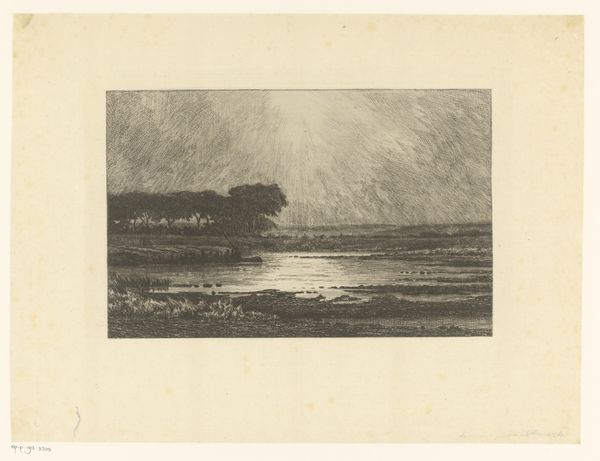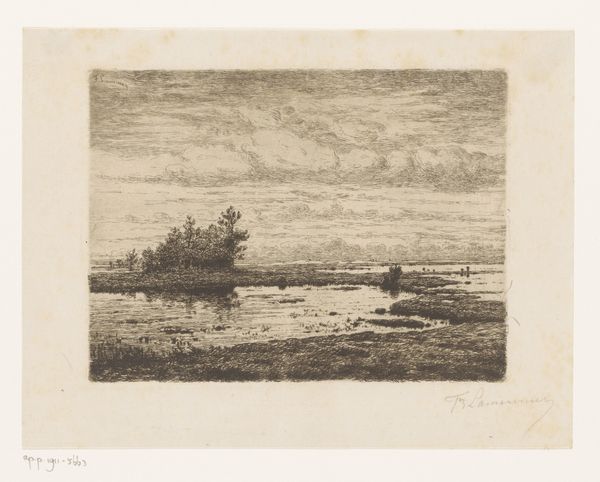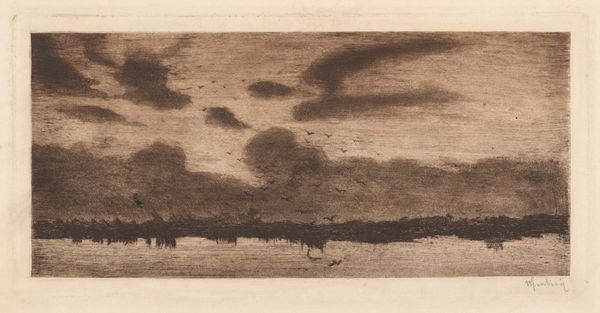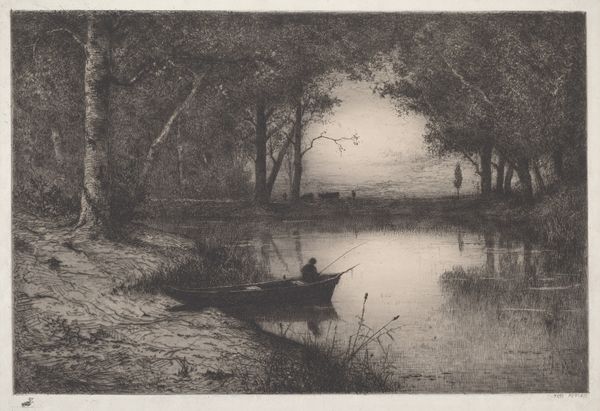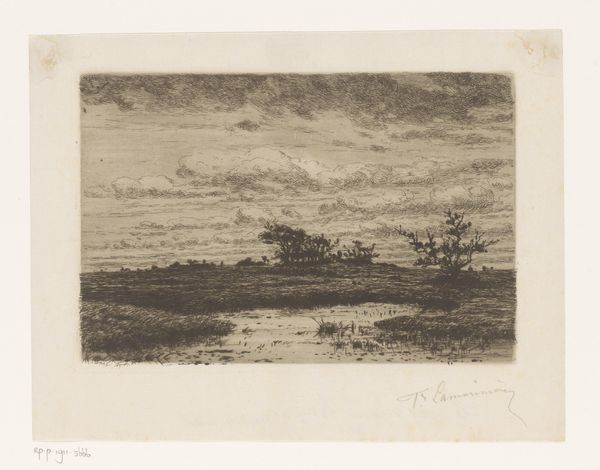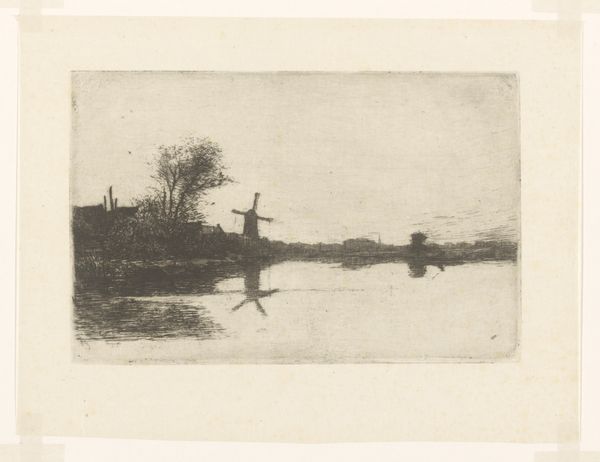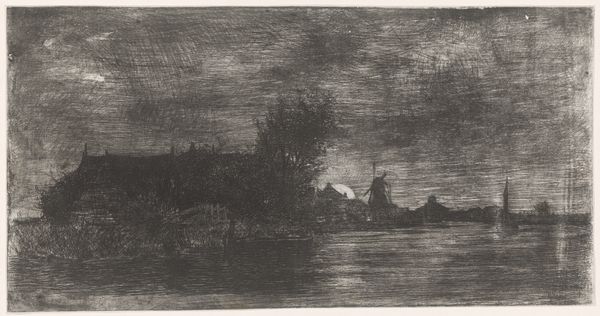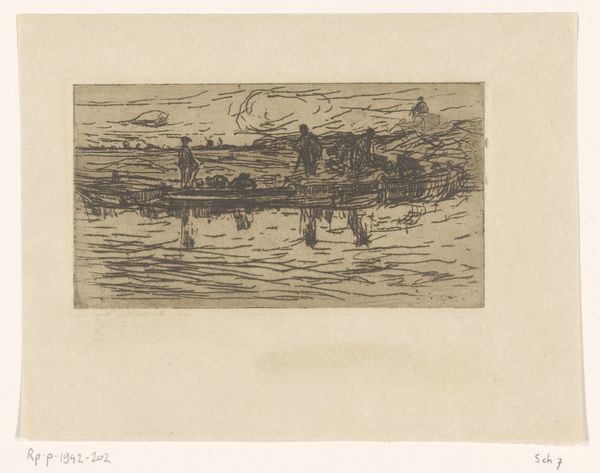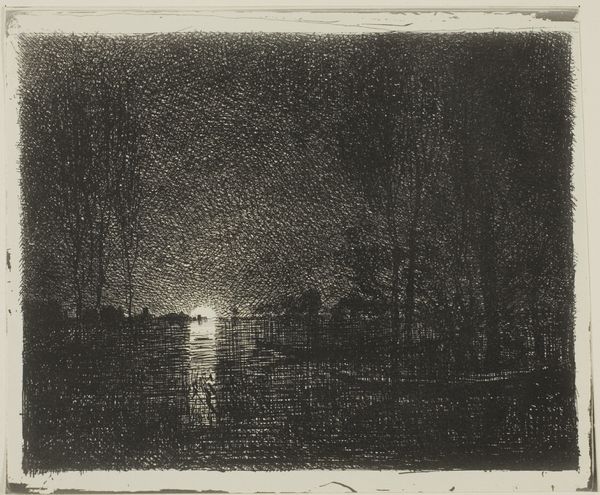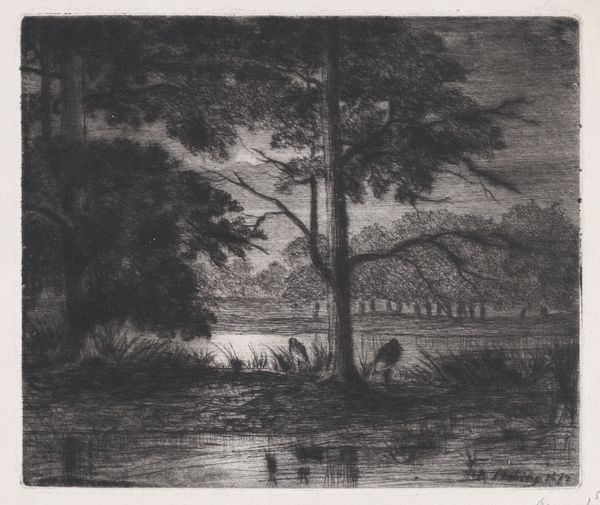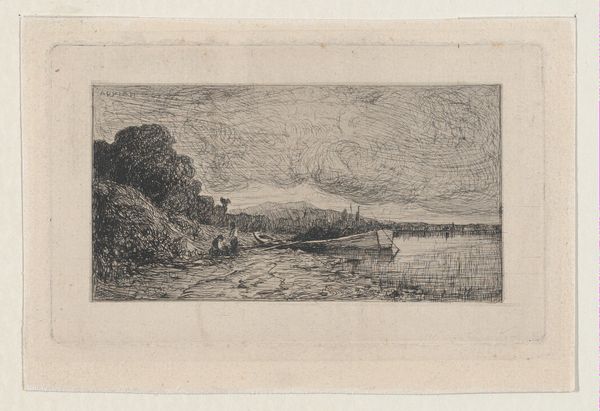
Night Voyage, from the series, Voyage en Bateau 1861
0:00
0:00
Dimensions: Image: 3 3/4 × 6 1/4 in. (9.5 × 15.9 cm) Sheet: 6 1/2 × 9 3/4 in. (16.5 × 24.8 cm)
Copyright: Public Domain
Editor: Here we have Charles-François Daubigny's etching, "Night Voyage, from the series, Voyage en Bateau", created in 1861. The darkness is almost oppressive, punctuated by the light reflecting on the water. What do you see when you look at it? Curator: It's the materiality of the print itself that immediately strikes me. Think about the copper plate, the labor involved in etching the image. Daubigny isn't just depicting a night voyage; he’s engaging with a specific industrial process. The romantic landscape genre gets filtered through the means of production available to him in 19th-century France. How does the mass reproducibility of etching democratize or alter notions about art making and art ownership? Editor: That's interesting, I was focused on the atmospheric qualities, the "romanticism" aspect. But you're right, it is a print – made to be reproduced. So the subject matter, this quiet, possibly unique experience of a night voyage, is intentionally rendered into something reproducible. Curator: Exactly. The materials and method invite questions about the artist’s intentions and who he imagined would be consuming his art. Was it meant for the wealthy bourgeoisie to decorate their homes with scenes of picturesque leisure, or did the reproducible format make it available to a broader audience? Consider the conditions under which this print was created. Editor: So, seeing it just as a pretty landscape would be missing the point. It’s about understanding its production, its potential audience, and the relationship between art and industrial processes. Thanks for pointing that out! I'm going to look at etchings a bit differently now. Curator: Precisely! Seeing art as a product of its material and social context offers such richer readings.
Comments
No comments
Be the first to comment and join the conversation on the ultimate creative platform.
